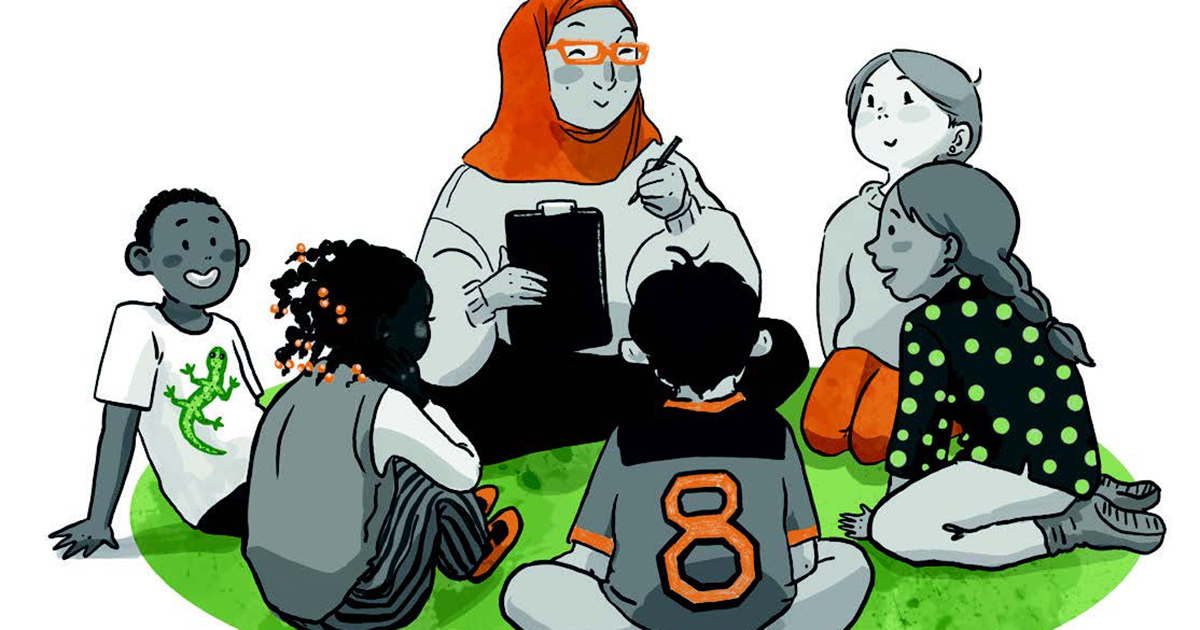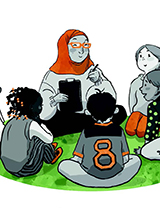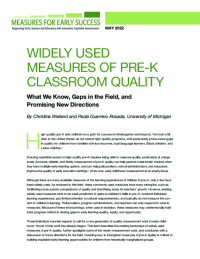Widely Used Measures of Pre-K Classroom Quality
What We Know, Gaps in the Field, and Promising New Directions

 High-quality pre-K sets children on a path for success in kindergarten and beyond. Yet most children in the United States do not attend high-quality programs, with particularly pronounced gaps in quality for children from families with low incomes, dual language learners, Black children, and Latino children.
High-quality pre-K sets children on a path for success in kindergarten and beyond. Yet most children in the United States do not attend high-quality programs, with particularly pronounced gaps in quality for children from families with low incomes, dual language learners, Black children, and Latino children.
Ensuring equitable access to high-quality pre-K requires being able to measure quality, particularly at a large scale. Accurate, reliable, and timely measurement of pre-K quality can help parents make better choices when they have multiple early learning options, and can help policymakers, school administrators, and educators improve the quality of early education settings. At its core, early childhood measurement is an equity issue.
Although there are many available measures of the learning experiences of children in pre-K, only a few have been widely used. As reviewed in this brief, these commonly used measures have many strengths, such as facilitating cross-system comparisons of quality and identifying areas for teachers’ growth. However, existing widely used measures tend to be weak predictors of gains in children’s skills in pre-K, overlook individual learning experiences, pay limited attention to cultural responsiveness, and typically do not measure the content of children’s learning. Policymakers, program administrators, and teachers can only respond to what is measured. Because of these shortcomings, when used in isolation, these measures may unintentionally hold back progress critical to closing gaps in early learning quality, equity, and opportunity.
These limitations have led experts to call for a new generation of quality measurement work in early childhood. Some of this work has already begun. This brief describes the existing landscape of widely used measures of pre-K quality, further spotlights some of the newer measurement work, and concludes with a discussion of future directions for the field. Investing now to strengthen measures of pre-K quality is critical to building equitable early learning opportunities for children from historically marginalized groups.






